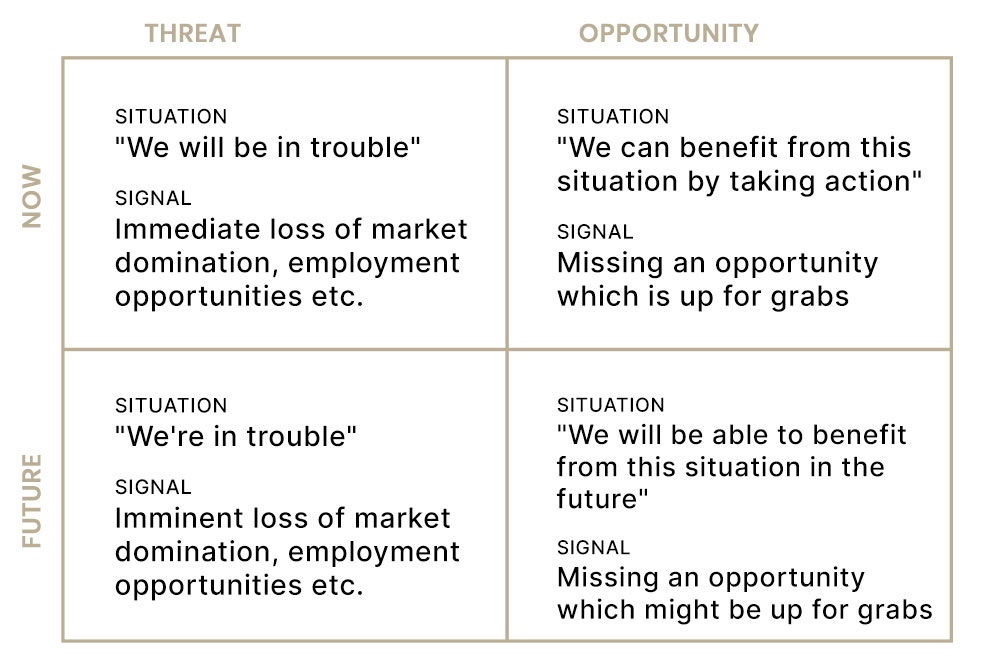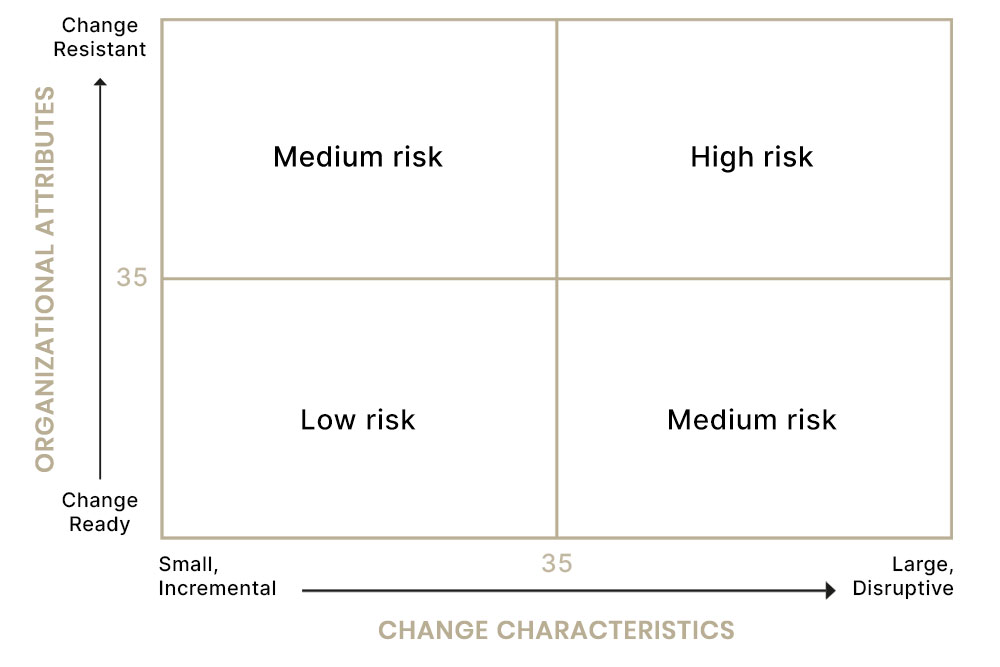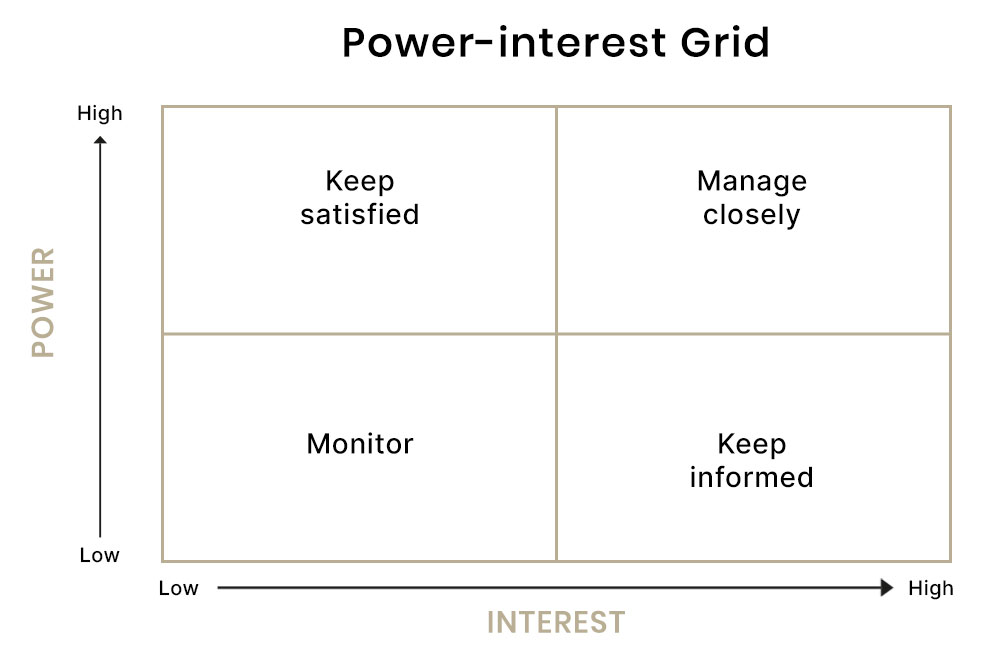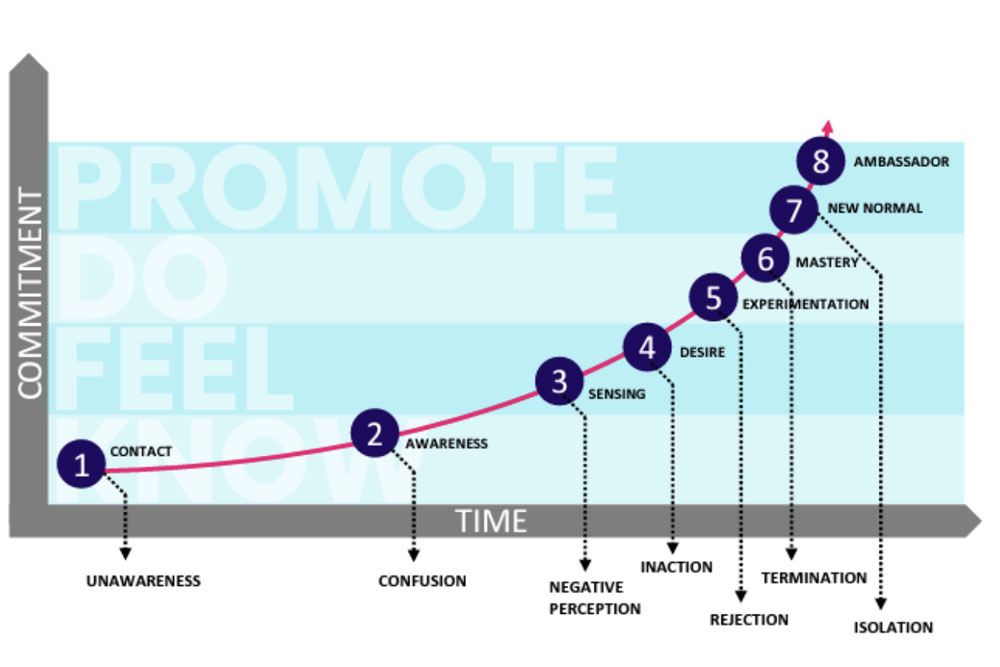Navigate Change with Confidence:
10 essential change management tools
So you’ve made the decision to venture into the world of change management? Great move!
But, before you take the plunge, know that there is a whole range of change management tools out there to help you succeed. Let’s fill up that toolbox of yours, shall we?
The Ultimate List of Change Management Tools
Picture this: change managers trying to roll out well-intentioned interventions that end up feeling like an annoying, hair-pulling task. The result? Chaos and resistance. And that’s the last thing anyone needs, right?
Navigating change purely on intuition may serve some (more experienced) change managers well. But it’s like driving without GPS – unnecessary at best and detrimental if you do end up getting lost.
Luckily, you’ve got a bunch of instruments at your disposal to help you reach your destination. There are change management models, which were developed by very smart people and have proven their worth over time.
On top of that, change management tools and templates exist to offer practical support and make your job easier to execute. Based on years of experience in the field of change management, we’ve compiled a list of 10 change management tools that should definitely be part of your toolbox.
Here’s the ultimate list of change management templates and tools:
- ZCase for Change
- ZThe Change Story
- ZChange Risk Assessment
- ZIdentifying and Selecting Change Leaders
- ZStakeholder Analysis
- ZCommunication Plan
- ZTraining Plan
- ZCommitment Ladder
- ZTemperature Checks
- ZChange Management Plan
Keep on reading and discover how to lay the foundation for a successful transformation!
Case for Change

Before anything else, you need to create a common understanding of the need for change. Why are we even doing this? If you can’t find a clear and unambiguous answer to this question, don’t even bother moving forward.
A case for change is a clearly articulated statement of the rationale or reason for a programme. It serves as an agreed ‘Single Version of the Truth’ which all stakeholders can rely on.
As such, the exercise of developing a case for change is crucial to creating early alignment with your key stakeholders (not just the top team). It creates a sense of urgency and helps you define the messages, themes and communication frameworks to apply throughout the transformation.
When people truly understand the WHY behind a transformation, they are more likely to support it and adopt the changes.
“At least 70% of major corporate changes fail to capture the benefits ascribed to them. A big factor is that the soft issues are not understood to truly be the hard issues. Not enough attention is dedicated to the hearts and minds of the people in the organisations” – Glenn Tilton, former CEO of United Airlines
Ready to get started? These are the questions your case for change needs to answer:
- What is the background to the business requirement?
- Why are we changing?
- What is at stake if we don’t change?
- What is the change?
- How much change will actually be involved?
- What benefits will the project deliver and to whom?
- How will we make it happen?
- What happens next?
Generally speaking, the Case for Change is always based on opportunity or pain. Meaning the current situation is not sustainable and is increasingly damaging the business (pain), or there is a huge reservoir of untapped potential just waiting to be explored (opportunity). Either way, business is at the core of why companies initiate transformations.

This foundational work ensures that when you embark on the journey of ‘doing business differently,’ you do so as a united front and with a clear vision of the destination!
Is a case for change not enough to convince your top leaders to invest in change management? Read how to craft a business case that speaks to the financial minds of your organization.
The Change Story
From Martin Luther King to Abraham Lincoln, history has shown the power of dreams time and time again. A compelling vision of the future can draw people in and make them believe.
That’s why the change story is a powerful tool. It serves as a vehicle for communicating your vision of the future state to all impacted employees within an organization.
But beware, the content alone will only get you halfway. The delivery is just as important! So when you present the story, make sure to include these key attributes:
- Passion: Passion is persuasive. Let your drive shine through, as it will have a significant influence on your audience.
- Excitement: Get excited about the change. Excitement is contagious and can inspire others to embrace the vision.
- Appeal to Feelings: Emotions are powerful motivators. While facts are important, emotions move people. Connect with your audience on an emotional level.
- Consistency: Ensure that your words align with your actions. Inconsistencies between what you say and what you do can lead to damage trust.
- Repetition: Articulate the change story as often as you can. Repetition reinforces the message and helps embed it in the minds of your audience.
Keep on reading and discover how to lay the foundation for a successful transformation!
Change Risk Assessment
When trying to argue the need and readiness for change to the rest of the organization, it is important to have a clear map of all the obstacles you might encounter.
The change risk assessment approach, created by Prosci, helps you systematically evaluate change risks based on change characteristics and organizational attributes:
- Change characteristics: assess the nature, scope, amount and impact of a change on a spectrum of a small incremental change – to a large, disruptive change.
- Organizational attributes: assess the organization’s values, culture, capacity for change, leadership style, and history of past changes on a spectrum of change-ready – to change-resistant.
As each change initiative is different, understanding these attributes will help you tailor your approach.
Ready to dive in? You can find Prosci’s Change Risk Assessment tool here!
As each change initiative is different, understanding these attributes will help you tailor your approach.
Ready to dive in? You can find Prosci’s Change Risk Assessment tool here!

Prosci Risk Assessment Grid, Source:
https://www.prosci.com/blog/keys-to-prepare-for-change
Identifying and Selecting Change Leaders
Finding and selecting change leaders, often referred to as change sponsors and champions, is a crucial step in successfully implementing a change initiative. Why?
Because these individuals are instrumental in driving the change forward and gaining the support and commitment of others within the organization!
Change sponsors are top leaders in the organization and have the power and money to say “yes” to the change project. They’re responsible for driving the transformation and overseeing the big picture.
Change champions/agents are usually middle managers or regular employees and are well-liked and excited about the change. Their job is to tell others why the change is good and help them get on board with it. They also give feedback and ideas.
When you find yourself on the hunt for change leaders, make sure to look out for these characteristics:
- They know the environment: what works and what doesn’t work
- They challenge the status quo
- They are genuinely convinced about the change and know how to sell it
- They are good at creating/maintaining relationships
- They are willing to make time for change
- They persevere, even in times of discomfort
- They are not intimidated by resistance
- They recognize, celebrate and reward others
Once you find these gems, hold on for dear life. Do not forget about them, but make sure to keep them informed throughout the twists and turns of your transformation.
Stakeholder Analysis
No matter how big or small the transformation, getting people involved is the only way for change to succeed. That’s why Stakeholder Management plays a pivotal role!
Stakeholder Management is the process of listening to people’s views, aligning with their motives where possible and influencing their opinions. This starts with a Stakeholder Analysis, to determine which steps you need to take.
Here’s how you tackle a Stakeholder Analysis:

Identify Potential Stakeholders
The first step is to compile a comprehensive list of all potential stakeholders. These can include individuals or groups within and outside the organization who may be affected by or have an influence on the project or change.
Understand Stakeholder Needs and Concerns
For each stakeholder or stakeholder group, it’s crucial to identify their specific needs, expectations, and concerns related to the project or change. This information helps to tailor communication and engagement strategies.
Ask yourself questions like:
- What interest, financially or emotionally, do they have in the change project?
- What is their current opinion of the change?
- Who influences their opinions?
- What will win them to support this change project?
- Or how will you manage their opposition?
Categorize the stakeholders in a Power-Interest Grid
Assess for each group or individual how great the impact of the change is on them and to what extent they can influence the transformation.
Position them in a diagram, or a so-called stakeholder map. This will be your guide in communicating with each stakeholder: how often you need to stay in contact and how to keep them satisfied or informed.
Every stakeholder in quadrant 4 has the highest priority in the context of stakeholder management. Pay particular attention to this group and try to influence them positively!
Want to get started? You can download the stakeholder analysis template developed by LQ!
Communication Plan
To ensure transparency, avoid resistance and facilitate a smooth transition, the best thing you can do is to keep everyone informed and engaged throughout the change process.
And for that to be possible, you need a solid communication plan! One that outlines the strategy for spreading information, including what will be communicated when, and through which channels.
To help you sail smoother through transformation, your communication plan should aim to answer the following questions (in this order!):
- Who is your target audience?
- What message do we need to give them?
- What is the right channel or medium?
Based on this information, you can identify specific communication touchpoints and plot these on a timeline. Well done, you’ve now created a communications calendar!

Training Plan

Sometimes, communication alone isn’t sufficient to bring the change home.
Think about an agile transformation, for example. Even if your teams are fully aware of the benefits and completely support the change, adoption might be low. Why? They simply don’t know how to work agile.
In this or similar cases, a well-structured training plan comes in handy. A training plan specifies how you will equip your workforce with the skills and knowledge necessary to the new way of working and how to change their behavior.
This requires identifying the capability gaps in your organization and selecting the best solutions to fill these gaps. By doing so, you will empower your organization with the right skills to drive the transformation forward!
Commitment Ladder
What is the holy grail of change management? Turning your employees into ambassadors for change. Once colleagues start convincing each other, the lion’s share of your work is done.
The commitment ladder describes how people become committed to any new way of operating.
If you understand the current stage of the commitment ladder for employees, you can choose the right interventions to help them progress to the next step.
Let’s take a look at the graph and ask yourself the following questions:

Knowing
Are the right people informed at the right time and do they understand why the change is important?
Feeling
Do they understand the personal impact of the change? What is their outlook on that?
Doing
Have they received sufficient training to deal with the changes and can they successfully apply it?
Promoting
At this stage, employees will be able to actively encourage other team members to adopt the change!
Want to start building commitment in the organization?
We highly suggest you take a look at the full commitment ladder tool shared by LQ!
Temperature Checks
How often have you asked someone of your team how they are doing and they simply respond with “Eh… alright” or “Not too bad”?
Especially when navigating through change, answers like this can be frustrating or can lead to even more questions.
A temperature check aims to gather specific feedback on the change initiative. It is essentially a very quick survey sent to employees, to understand how individuals are responding to the transformation.
These regular check-ups can help you identify the current level of understanding and support for your change initiative. It consists of two dimensions only:
- To what extent do you understand the change initiative?
(Unaware – Little or no understanding – Reasonable level of understanding – High level of understanding) - To what extent do you support the change initiative?
(Not currently supportive – Slightly supportive – Fairly supportive – Fully supportive)
Based on the outcomes, you can define which next steps might be necessary to improve these scores!

Change management plan

Last but not least, it’s encouraged to always create a change management plan.
A change management plan consists of all previously mentioned key efforts – from building a case for change to doing temperature checks.
What are the benefits? Yes, by putting all of your change-related activities on a timeline, you keep yourself organized. But also, a change management plan is a great document to showcase the progress of the programme to your stakeholders.
Of course, this document should serve as a guideline. Don’t get married to it! Change management is a people job. Circumstances may change, which might require you to be flexible and change the plan.
That’s it! The 10 change management templates and tools to use in 2024. Note that knowing when and exactly how to use these tools comes with experience. Need a helping hand? SPRING TODAY can help you find the right change expert for your transformation.
That’s it! The 10 change management templates and tools to use in 2024.
Note that knowing when and exactly how to use these tools comes with experience. Need a helping hand? SPRING TODAY can help you find the right change expert for your transformation.
Change management Top 10 Tools | Landing page
*By submitting this form, I give permission to SPRING TODAY to process my personal data as described in the Privacy statement.
That’s it! The 10 change management templates and tools to use in 2024.
Note that knowing when and exactly how to use these tools comes with experience. Need a helping hand? SPRING TODAY can help you find the right change expert for your transformation.
Change management Top 10 Tools | Landing page request
*By submitting this form, I give permission to SPRING TODAY to process my personal data as described in the Privacy statement.
